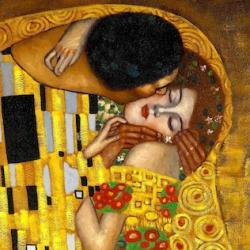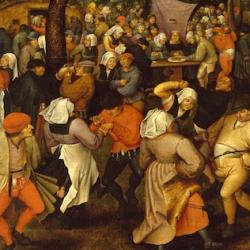No other mythology, writes Eva Kuels in The Reign of the Phallus, gives rape a more prominent role than that of Greece (49). In our expurgated handbooks of mythology, it’s called “dalliance” or somesuch, but Kuels argues that the artifacts show that what’s happening is rape.
In most cases, the rape is sublimated into something else. A god attacks a woman not with an erect phallus but with some weapon or instrument: “the rampaging gods and heroes wield their characteristic attributes as symbolic phalluses, often aimed revealingly at the genital zones of their victims—Zeus, his scepter or his thunderbolt (or both); Poseidon, his trident; and Hermes, his caduceus” (50).
Many gods were rapists, but “The master rapist, of course, was Zeus: the catalogue of his conquests became a topos of Greek literature, and led to a scurrilous Greek anecdote. A foreigner once came to Athens and asked why the Athenians so often used the exclamation ‘by Zeus’; the answer: ‘Because so many of us are.’ In the literary tradition, Zeus overcomes most of his female victims by trickery: he rapes Leda in the form of a swan, Danaë in the guise of a golden rain, and Alkmene in the persona of her legitimate husband (holding up the dawn for three nights to draw full profit from his scheme), and he does not even hesitate to take on so coarse a disguise as that of a randy satyr for the purpose of violating Antiope. In the pictorial tradition of the mid-fifth century, on the other hand, his excursions are represented mostly through the motif of pursuit.”
Zeus is depicted “on a Dionysiac drinking cup (kantharos) by the Brygos Painter, in two scenes of rape, one homosexual and one heterosexual, carefully balanced in composition, with that typically Greek bisexual promiscuity. The male victim, without doubt, is Zeus’ perennial favorite, Ganymede; the female is anonymous” (51).
Kuels cites The Love of the Gods in Attic Art, which “contains 395 items, and includes rape by all the major male divinities on Olympus and by one rather obscure goddess, Eos (Dawn), who is known primarily for her aggressive sexual appetites. The author offers no explanation for this explosion of sexual violence on Mount Olympus; instead, she views the tales of rape as a subtle expression of the Athenians’ ‘yearning for the divine’” (52).
When scholars compare Hebrew and Hellenistic religion, they sometimes ignore this obvious divergence: Yahweh the God of Israel is not promiscuous or sexually violent. To a Greek pagan, that must have seemed mighty strange, as strange as rapist gods seem to us.















